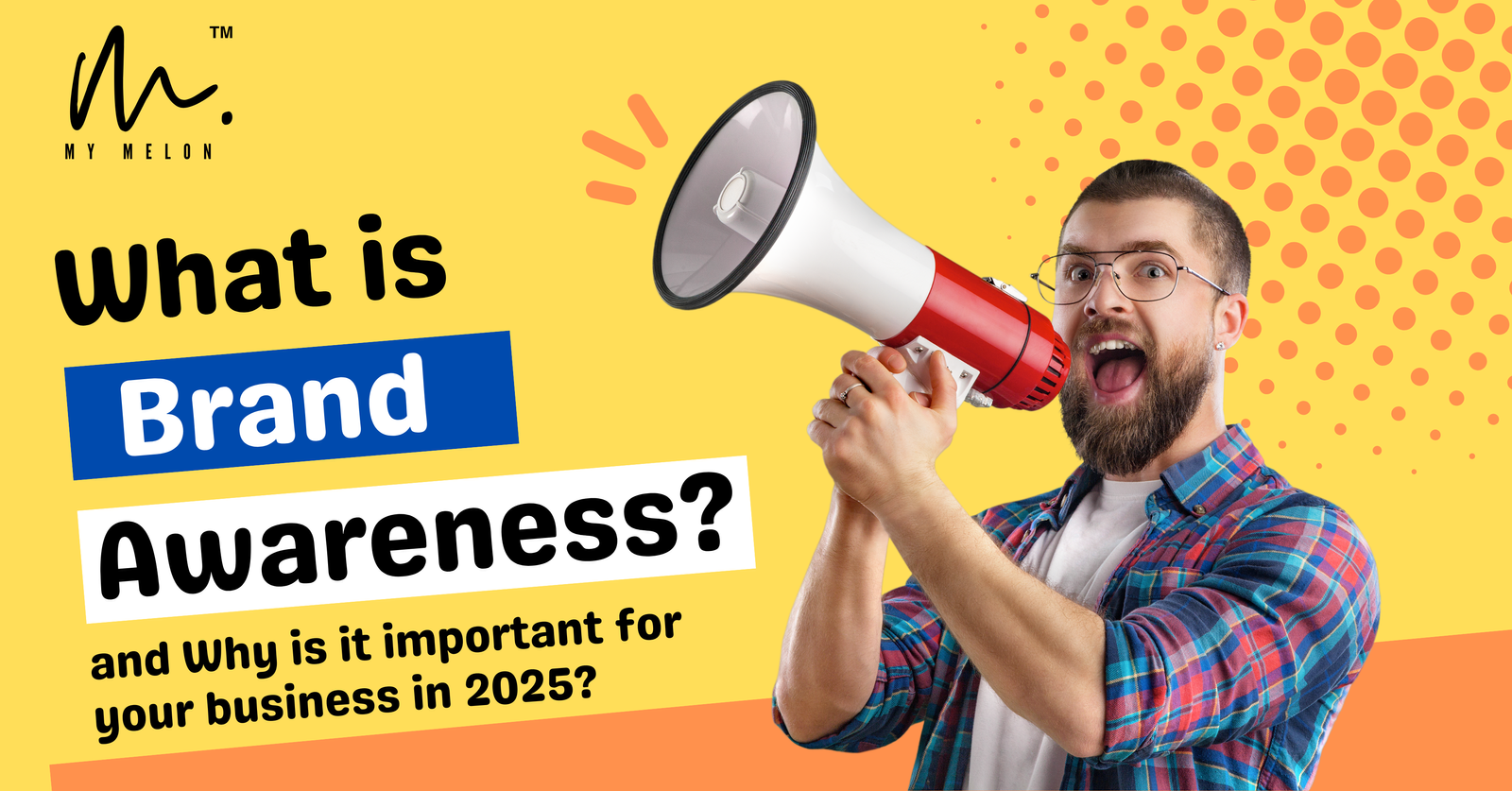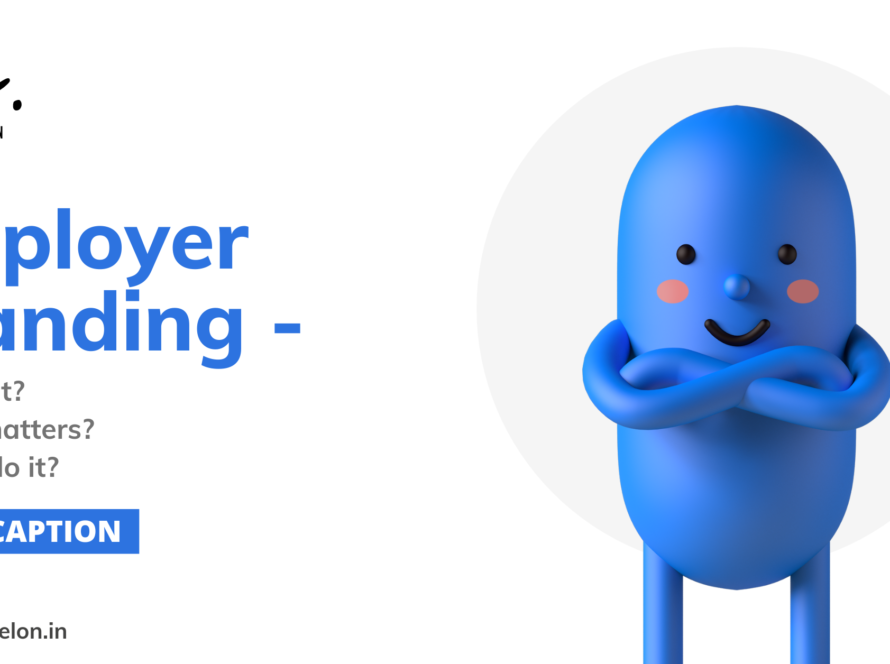Assume yourself as a consumer for a while, and picture this: you’re going through a busy city market, surrounded by a multitude of stores and businesses vying for your attention.
Among the sea of logos and advertisements, which ones do you notice? The ones you recognize, of course. That’s the magic of brand awareness – the ability of a brand to etch itself into the consciousness of consumers, standing out amidst the noise of the marketplace. It is the familiarity and trust that consumers associate with your brand, even if they haven’t made a purchase yet.
A study found that consumers are 2.5 times more likely to choose a brand they recognize over a lesser-known competitor.
Brand awareness in shaping customer’s everyday language & behaviors
When a person consistently associates certain actions or products with specific brands, it becomes second nature to refer to them by their brand names, even when generic terms exist.
This phenomenon not only reflects the deep-seated influence of brands but also highlights the effectiveness of brand awareness in establishing strong connections with consumers.
Let’s take a closer look at some of the examples.
In some regions, particularly in India, “Maggie” has become synonymous with instant noodles. Even though Maggie is a specific brand of instant noodles produced by Nestle, people often use the term “Maggie” to refer to any brand of instant noodles.
When we say “I’ll Google it,” we’re using Google’s brand name as a verb to mean conducting an online search. Right?… Google has become the go-to search engine for millions of people worldwide, leading to its brand name being commonly used as a verb.
Even though Uber is a brand of taxi-riding, many people use “Uber” as a verb to book a ride. This usage highlights the pervasive influence of the Uber company in the transportation industry.
Often people use “Coke” as a generic term to refer to any carbonated soft drink. This phenomenon underscores the strong association between Coca-Cola and the soft drink category, kudos to its extensive marketing efforts and brand recognition.
But brand awareness is never been a binary switch. There are different levels of recognition a brand has to pass:
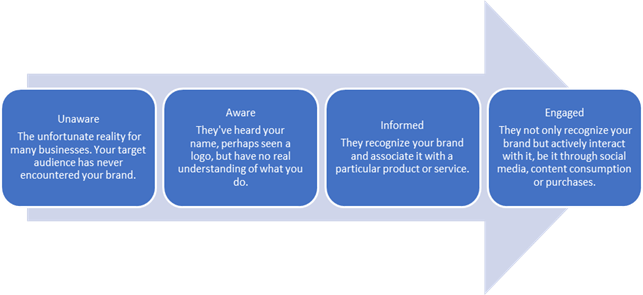
Why Everyone Knows Apple, But Not Your Business
So, what sets Apple apart from the competition? One word: BRANDING. Apple’s branding strategy is a masterclass in building and maintaining brand awareness. From its iconic logo to its minimalist design aesthetic, every aspect of the Apple brand is carefully crafted to evoke a sense of sophistication, innovation, and exclusivity.
Apple doesn’t just sell products; it sells a lifestyle – one that millions of consumers aspire to be a part of.
In the vast and crowded landscape of modern commerce, few brands command the same level of recognition as Apple.
While you may not achieve the same level of recognition as Apple overnight, but with the right strategies and tactics, you can elevate your brand and capture the attention of your target audience.
Strategies for Building Brand Awareness
Fortunately, you don’t need Apple’s billion-dollar marketing budget to build brand awareness for your business. With the right strategies and tactics, you can elevate your brand and capture the attention of your target audience.
Be a Person, not a Company
Have you ever found yourself more drawn to the barista at your favorite cafe than to the cafe itself? It’s because people connect with individuals, not just businesses.
Gone are the days when faceless corporations ruled the roost. Today, people crave authenticity and connection. By infusing your brand with personality and humanity, you can break through the clutter and resonate with your audience on a deeper level. Share your stories, values, passions, and behind-the-scenes glimpses to humanize your brand and build genuine relationships with your audience.
Listen, Respond, Engage
It’s not enough to simply shout into the void, you need to start a conversation. Social media isn’t just a megaphone for broadcasting your message; it’s a bustling marketplace of ideas, opinions, and interactions. Take the time to listen to your audience, respond to their comments and messages, and join relevant conversations in your industry.
By being an active and engaged participant on social media, you can cultivate a vibrant community around your brand and keep your audience captivated and coming back for more.
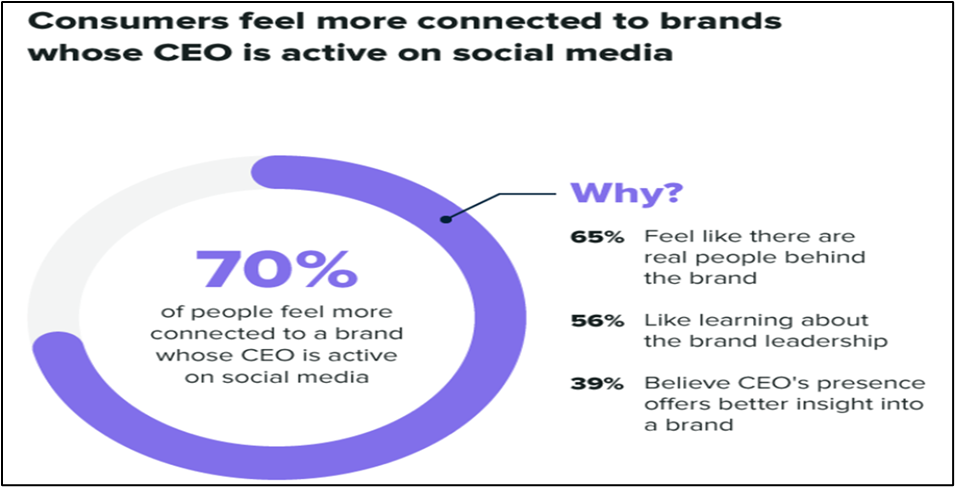
Co-Marketing
In the world of business, sometimes two heads are better than one. Partnering with a brand that complements your own allows you to tap into its established audience, exposing your brand to a fresh pool of potential customers.
Sharing resources and budgets allows you to create impactful campaigns without doubling your individual expenditures. Partnering with a successful brand provides social proof, implying that your brand is also reliable and trustworthy.
Create joint blog posts, infographics, videos, or even webinars, leveraging each other’s expertise and promoting them across both audiences. Allow your partner to take over your social media handles for a day or period, introducing your brand to their followers and vice versa.
Crafting Shareable Content
Creating content that resonates and spreads like wildfire is key to boosting brand awareness. Start by understanding your audience’s interests and pain points. Then, craft visually appealing, informative, and entertaining content that adds value and makes the audience share it with their friends and relatives.
Whether it’s engaging posts/videos, captivating infographics, or thought-provoking articles, make sure it aligns with your brand identity and values. By consistently delivering share-worthy content that delights and inspires, you can organically expand your brand’s reach and visibility across social networks.

Dove’s “Real Beauty Sketches” campaign video went viral due to its powerful message and emotional storytelling, generating over 70 million views with countless shares.
Share a Distinct Point of View
Differentiate your brand by boldly expressing a unique perspective on industry trends, societal issues, or cultural movements. Challenge conventional thinking, provoke thought, and spark conversation.
A distinct point of view serves as the North Star guiding all brand activities, from marketing campaigns to product development. It’s what gives a brand depth, personality, and relevance in the eyes of consumers. By taking a stand on matters that matter, brands can forge deeper connections with their audience, inspiring loyalty and advocacy in the process.
Ultimately, brands that dare to be bold, authentic, and unapologetically themselves are the ones that leave a lasting impression on consumers’ hearts and minds. So, embrace your brand’s unique perspective, and watch as it becomes a beacon of light in a sea of sameness.
Use the power of hashtags (#)
Hashtags have emerged as potent tactics for boosting brand visibility and engagement. By strategically incorporating relevant hashtags into your social media posts, you can extend your reach beyond your immediate followers and tap into larger conversations within your industry or niche.
Choose hashtags that are not only popular but also aligned with your brand identity and target audience’s interests. Additionally, consider creating custom hashtags unique to your brand or specific campaigns to foster community engagement and encourage user-generated content.
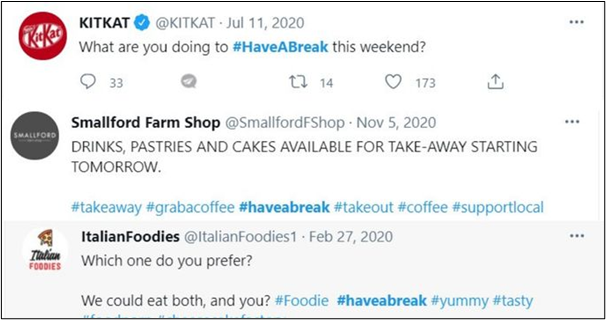
Remember to keep your hashtag usage concise and targeted, avoiding overuse or irrelevant tagging. With the right approach, hashtags can amplify your brand’s presence.
Show up consistently
Consistency is king in brand awareness. Make your presence felt by showing up consistently across all channels. Through social media, email newsletters, or blog posts, maintain a regular schedule of content delivery. Be reliable, dependable, and always on-brand. Consistent messaging and visuals build trust and familiarity with your audience, keeping your brand at the top of their mind.
So, don’t underestimate the power of frequency – the more you show up, the more likely you are to be noticed and remembered. Stay committed to your brand’s voice, values, and mission, and watch your awareness soar.
But how exactly do you measure something as intangible as brand awareness?… Let’s delve into the various methods and metrics used to gauge the strength of your brand’s presence in the minds of consumers.
Measuring Brand Awareness
Social Media Metrics
Monitor social media metrics like follower growth, reach, and engagement to gauge brand awareness. Analyze mentions, shares, and comments to understand how often your brand is being discussed and how positively it’s perceived.
Web Analytics
Use web analytics tools to track website traffic, including direct visits, organic search, and referral traffic. High levels of direct traffic and branded searches ultimately indicate strong brand awareness.
Brand Searches
Analyze search engine data to measure the volume of branded searches for your company name, products, or services. Branded search volume can be tracked using various tools such as Google Trends, Ahrefs, SEMrush, etc.
Social Listening
Monitor online conversations and mentions of your brand across various social media platforms using social listening tools like Locobuzz. Pay attention to sentiment and trends to gauge brand perception and identify opportunities for engagement.
Competitive Analysis
Compare your brand’s awareness metrics with those of competitors to benchmark performance and identify areas for improvement.
Besides the above methods, there is one of the most common and sought-after methods in market research – Unaided and Aided awareness.
What is Unaided Awareness?
Unaided awareness is the percentage of respondents aware of your product, brand, or advertising top-of-mind without being assisted.
In a survey, respondents might be asked: “What brands of athletic shoes come to mind?”
Respondents will state Nike, Adidas, or other brands open-ended without being aided.
What is Aided Awareness?
Aided brand awareness is the percentage of respondents aware of your product, brand, or advertising when asked.
In a survey, respondents might be asked: “Are you aware of Nike athletic shoes?“
Respondents will state yes or no to clarify their aided awareness of each brand. Aided awareness questions are only asked if the respondent fails to mention the brand unaided.
When considering unaided vs aided awareness, it’s important to recognize the advantages of both. While high unaided brand awareness figures are desirable, paying attention to aided awareness numbers is crucial for refining your brand awareness strategy.
By utilizing a combination of these above-mentioned methods and metrics, you can gain a comprehensive understanding of your brand’s awareness levels and make informed decisions to enhance your brand’s visibility and impact in the marketplace.
Remember that brand awareness is not static and requires continuous monitoring and adaptation to different strategies in order to remain competitive in your respective industry. With dedication and a commitment to authenticity, you can build a brand that not only stands out but also stands the test of time…
Also Read : Branding in Marketing: The Secret Sauce to Success



